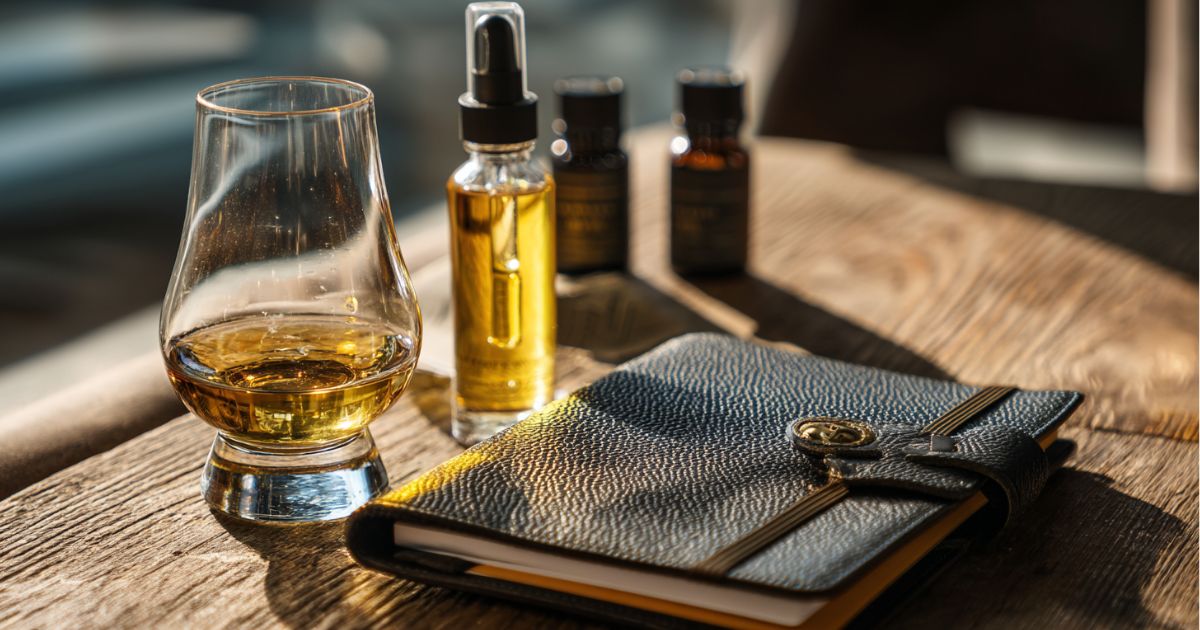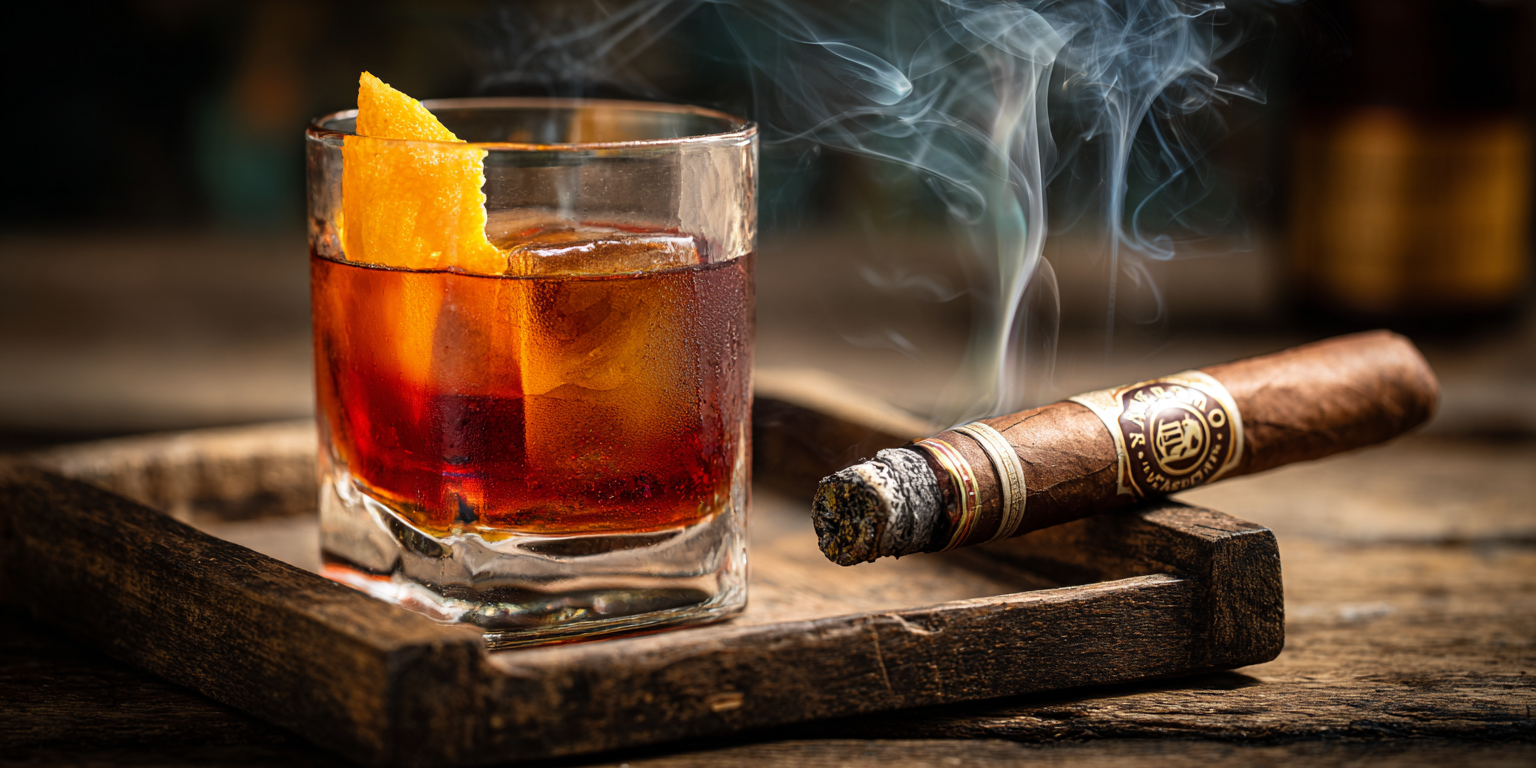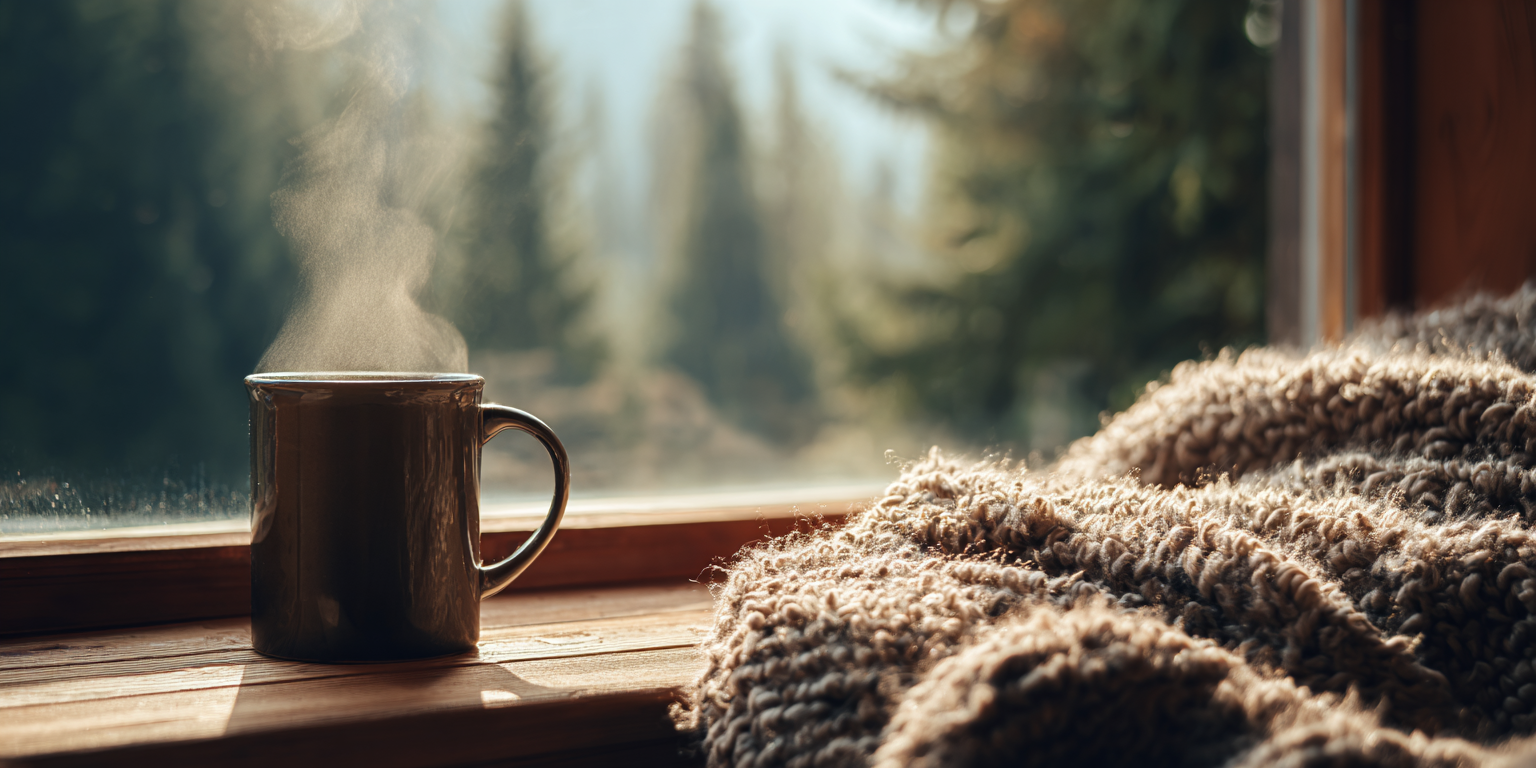Mindful Tasting: Approaching Whiskey with Intention

Whiskey tasting is so much more than just throwing back a shot; it's a journey for the senses, a mindful exploration of craftsmanship and flavor. It's about slowing down, paying attention, and truly appreciating the spirit in your glass. In this blog post, we'll explore the art of mindful whiskey tasting, breaking down the steps to help you unlock the full potential of every dram. We'll cover everything from choosing the right glassware to identifying those elusive notes of fruit, spice, and oak. If you're eager to dive deeper, be sure to check out our latest podcast episode, How to Taste Whiskey Like a Pro | Podcast Episode, where we delve even further into the nuances of mindful whiskey appreciation.
Introduction: The Art of Mindful Whiskey Tasting
In today's fast-paced world, it's easy to rush through experiences, barely registering the details. Whiskey tasting, however, offers an opportunity to slow down, to be present, and to engage all your senses. Mindful tasting is about approaching whiskey with intention, appreciating the history, the craftsmanship, and the unique characteristics of each bottle. It’s about turning a simple drink into a rewarding and enriching experience.
Think of it like this: you wouldn't rush through a visit to an art museum, would you? You'd take your time, observe the brushstrokes, the colors, the composition. Whiskey tasting deserves the same level of attention and respect. Each whiskey has a story to tell, a unique profile developed through careful selection of grains, distillation techniques, and aging processes. By slowing down and paying attention, you can begin to decipher that story, to appreciate the artistry that goes into every bottle.
Mindful tasting isn't about being an expert or a snob. It's about developing your palate, expanding your sensory awareness, and deepening your appreciation for the world of whiskey. It's a journey of discovery, and the more you practice, the more rewarding it becomes.
Choosing the Right Glassware
The glass you choose can significantly impact your whiskey tasting experience. While any glass can hold whiskey, certain shapes are better suited for maximizing aroma and flavor. The ideal glass should concentrate the aromas towards your nose, allowing you to fully appreciate the whiskey's complexity.
The most popular and highly recommended type of glassware for whiskey tasting is the Glencairn glass. Its tulip shape concentrates aromas at the narrow opening, while the wider bowl allows the whiskey to breathe. The stem provides a comfortable grip and prevents your hand from warming the whiskey, which can alter its aroma. Other options include the copita glass, similar in shape to the Glencairn, and even a simple rocks glass can work in a pinch, though it won't concentrate aromas as effectively.
Avoid using wide-mouthed glasses or tumblers, as they allow the aromas to dissipate too quickly. The shape of the glass is key to directing those precious volatile compounds towards your nose, enhancing the overall tasting experience.
Beyond the shape, consider the material. Clear glass is essential for observing the whiskey's color and viscosity. A thin rim is also preferable, as it allows for a smoother flow of whiskey onto your palate. Ultimately, the best glass is the one you enjoy using, but investing in a proper tasting glass can make a noticeable difference.
The Importance of Nosing: Unlocking the Aroma
Nosing, or smelling, the whiskey is arguably the most important part of the tasting process. It's through your sense of smell that you can detect the widest range of flavors and aromas, unlocking the whiskey's true character. Before you even take a sip, take a moment to appreciate the aroma.
Start by holding the glass a few inches from your nose and gently swirling the whiskey. This releases the volatile compounds, allowing them to travel up to your olfactory receptors. Take short, gentle sniffs, rather than deep inhalations, which can overwhelm your senses with the alcohol fumes. Close your eyes and focus on the scents you detect. What do you smell? Fruit? Spice? Wood? Smoke? The possibilities are endless.
Don't be afraid to get close to the glass, even inserting your nose slightly inside. This can help you identify subtle nuances and complexities. As you nose, try to break down the aromas into specific components. Instead of just "fruit," can you identify specific fruits like apple, pear, or cherry? Instead of "spice," is it cinnamon, clove, or pepper?
Nosing can be challenging at first, but with practice, you'll become more adept at identifying different aromas. Keep a notebook and jot down your observations. This will help you train your nose and build your vocabulary. Remember, there are no right or wrong answers. What you smell is what you smell. The goal is to become more aware of the sensory experience and to articulate your observations.
The First Sip: Acclimation
The first sip is not about savoring the flavor. It's about acclimating your palate to the alcohol and preparing it for the more nuanced flavors to come. Take a small sip, just enough to coat your tongue. Swirl it around your mouth, allowing it to reach all areas of your palate. Notice the initial impact: the texture, the temperature, the alcohol burn.
This first sip serves to cleanse your palate and to prepare it for the subsequent sips. It's like warming up before a workout; it gets your taste buds ready for the main event. Don't worry too much about identifying specific flavors at this stage. Focus on the overall sensation.
After you've swirled the whiskey around, swallow it slowly. Notice how the flavors evolve as they travel down your throat. Does the alcohol burn linger? Does it fade quickly? Pay attention to the overall impression of the first sip. It's a crucial step in preparing your palate for the more complex flavors that await.
The Second Sip: Discovering the Layers of Flavor
Now that your palate is acclimated, it's time for the real tasting to begin. Take a slightly larger sip than the first one. Again, swirl it around your mouth, paying attention to the various flavors that emerge. This is where you'll begin to truly discover the layers of complexity within the whiskey.
As you swirl, try to identify the dominant flavors. Are they sweet, spicy, smoky, or something else entirely? Break down the flavors into more specific categories. Do you taste vanilla, caramel, or honey? Do you detect notes of cinnamon, pepper, or clove? Perhaps you notice hints of oak, leather, or tobacco.
The flavors will evolve over time as the whiskey interacts with your saliva and your body temperature warms it up. Continue to swirl and savor, allowing the flavors to unfold. Don't be afraid to take your time and explore the nuances. This is where the real magic happens.
Consider the mouthfeel as well. Is the whiskey smooth and silky, or is it rough and astringent? Does it feel oily or watery? The mouthfeel can provide valuable clues about the whiskey's composition and aging process.
The second sip is where you begin to connect with the whiskey on a deeper level. It's where you start to appreciate the craftsmanship and the artistry that went into its creation.
The Impact of Water: Revealing Hidden Aromas
Adding a few drops of water to your whiskey can dramatically alter its flavor profile. Water can help to release volatile compounds that are otherwise hidden, revealing new aromas and flavors that you might not have detected before. It also lowers the alcohol content, making the whiskey more approachable and allowing you to discern the more subtle nuances.
Use a dropper or a pipette to add a small amount of water, a few drops at a time. Avoid adding too much water, as this can dilute the whiskey and diminish its flavor. Experiment to find the optimal amount for your palate. Some whiskeys benefit from just a drop or two, while others can handle a more generous splash.
After adding water, swirl the whiskey and nose it again. Notice how the aroma has changed. Have new scents emerged? Have existing scents become more pronounced? Take another sip and see how the flavor has evolved. You might be surprised at the difference a few drops of water can make.
The science behind this phenomenon lies in the way water interacts with the different compounds in whiskey. Some compounds are hydrophobic (water-repelling) and tend to cluster together, hiding their aromas. When water is added, it disrupts these clusters, releasing the compounds and making them more volatile.
Evaluating the Finish: The Lingering Impression
The finish is the lingering sensation that remains after you swallow the whiskey. It's the final impression, the last chapter of the whiskey's story. The finish can be short, medium, or long, and it can be just as complex and nuanced as the initial flavor.
Pay attention to the flavors that linger on your palate. Are they the same as the initial flavors, or do they evolve into something different? Do you detect any new flavors that weren't apparent before? Notice the texture and the sensation in your throat. Is it warm and comforting, or is it harsh and astringent?
A long finish is generally considered to be a sign of quality, as it indicates a complex and well-developed whiskey. However, the length of the finish is not the only factor to consider. The quality of the finish is just as important. A long finish that is unpleasant or unbalanced can be just as disappointing as a short, unremarkable finish.
As you evaluate the finish, consider how it contributes to the overall experience. Does it complement the initial flavors, or does it clash with them? Does it leave you wanting more, or does it leave you feeling satisfied? The finish is the final piece of the puzzle, and it can make or break the whiskey tasting experience.
Sharpening Your Palate Over Time
Like any skill, whiskey tasting improves with practice. The more you taste, the more attuned your palate will become, and the more you'll be able to discern the subtle nuances and complexities of different whiskeys. The key is to taste regularly, to pay attention to the sensory details, and to keep expanding your knowledge.
Try to taste a variety of different whiskeys, from different regions, different styles, and different price points. This will help you to develop a broader understanding of the whiskey landscape and to identify your own preferences. Don't be afraid to experiment and to try new things. You might discover a new favorite.
Attend whiskey tastings and seminars. These events provide an opportunity to learn from experts, to sample a wide range of whiskeys, and to connect with other enthusiasts. They're also a great way to expand your vocabulary and to refine your tasting skills.
Read books and articles about whiskey. The more you learn about the history, the production methods, and the different styles of whiskey, the more you'll be able to appreciate the spirit in your glass. Knowledge enhances appreciation.
Most importantly, don't be afraid to make mistakes. Everyone's palate is different, and there's no right or wrong way to taste whiskey. The goal is to enjoy the experience and to learn along the way.
Recognizing Notes of Fruit, Spice, and Oak
Enthusiasts often describe whiskey using specific tasting notes: fruit, spice, oak, and so on. But what do these notes really mean, and how can you learn to identify them? It's all about building associations and training your palate to recognize subtle flavors.
Fruit: Fruit notes can range from bright citrus to dark dried fruits. Look for aromas and flavors of apple, pear, cherry, berries, raisins, figs, and dates. These notes often come from the fermentation process or from the interaction with the wood during aging.
Spice: Spice notes can add complexity and warmth to the whiskey. Look for aromas and flavors of cinnamon, clove, pepper, ginger, nutmeg, and cardamom. These notes often come from the oak barrels used for aging, particularly those that have been charred or seasoned with sherry or other fortified wines.
Oak: Oak is a common and important flavor in whiskey, imparting notes of vanilla, caramel, toast, and wood. The type of oak used, the level of charring, and the length of aging all contribute to the oak's flavor profile. American oak typically imparts notes of vanilla and caramel, while European oak often contributes spicier notes.
To improve your ability to identify these notes, try tasting these flavors separately. Sample different fruits, spices, and oak-aged products to build a mental library of flavors. Then, when you taste whiskey, you'll be better equipped to recognize and identify these notes.
Whiskey Tasting: A Rewarding and Mindful Experience
Whiskey tasting is not just about drinking; it's about engaging your senses, expanding your knowledge, and deepening your appreciation for the spirit. By slowing down, paying attention, and approaching whiskey with intention, you can transform a simple drink into a rewarding and mindful experience.
It's about more than just identifying flavors; it's about connecting with the history, the craftsmanship, and the artistry that goes into every bottle. It's about sharing the experience with friends and family, and about creating memories that will last a lifetime.
So, the next time you pour a dram of whiskey, take a moment to appreciate the art of mindful tasting. Swirl, nose, sip, and savor. You might be surprised at what you discover.
Further Resources: CigarAndWhiskeyGuide.com
For even more in-depth information on whiskey tasting, cigar pairings, and other lifestyle tips, be sure to visit CigarAndWhiskeyGuide.com. You'll find a wealth of articles, reviews, and guides to help you elevate your enjoyment of the leaf and the dram.
Conclusion: Elevating Your Whiskey Appreciation
Mindful whiskey tasting is a journey of discovery, a way to connect with the spirit on a deeper level and to appreciate the artistry that goes into every bottle. By following the steps outlined in this blog post – from choosing the right glassware to recognizing those elusive notes of fruit, spice, and oak – you can unlock the full potential of your whiskey experience. Remember to slow down, engage your senses, and approach each dram with intention. For an even more detailed breakdown of these techniques, don't forget to listen to our podcast episode, How to Taste Whiskey Like a Pro | Podcast Episode. Cheers to a more mindful and rewarding whiskey journey!







